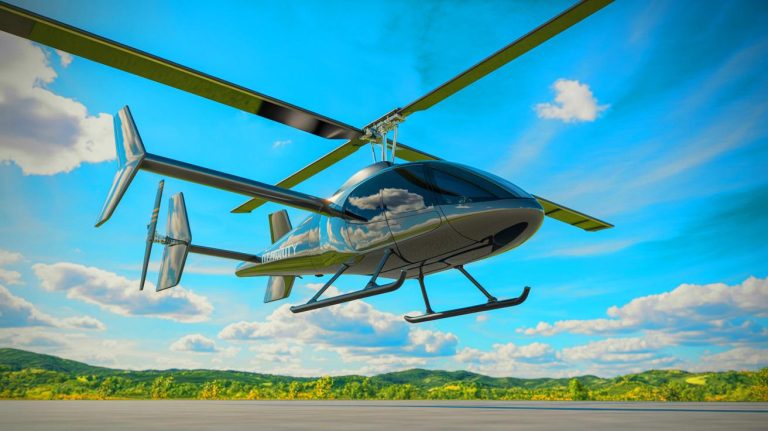| IN A NUTSHELL |
|
The aviation industry is on the brink of a revolutionary leap with the unveiling of the Cavorite X7, the world’s first ‘heli-plane’. This groundbreaking aircraft is setting new standards by combining the best features of helicopters and airplanes. It boasts the ability to take off vertically and achieve speeds of up to 280 mph. Developed by Horizon Aircraft, the Cavorite X7 is not just a marvel of engineering but a symbol of the future of air travel. As we explore the intricacies of this innovative machine, the potential applications and implications for the transportation sector are both exciting and profound.
The Ingenious Design of the Cavorite X7
The Cavorite X7 is a testament to cutting-edge engineering, prominently featuring a fan-in-wing design. This unique configuration allows the aircraft to exhibit the agility of a helicopter while maintaining the speed of a conventional airplane. The 14 powerful lift fans embedded within its wings are the heart of this design, enabling the aircraft to perform vertical takeoffs with ease. Once airborne and at a safe speed, the aircraft’s sliding panels conceal the fans, allowing the X7 to fly like a traditional plane using its gas-powered turbine engine. This seamless transition from vertical to horizontal flight is a significant achievement, underscoring the aircraft’s versatility and efficiency.
Moreover, the design eliminates the need for complicated mechanisms like multi-copter rotating nacelles or tilt-wing systems, which are common in other eVTOL (electric Vertical Take-Off and Landing) aircraft. This simplification not only enhances the aircraft’s safety and stability but also reduces maintenance complexities. With multiple layers of redundancy built into the system, the Cavorite X7 promises a reliable and robust flight experience.
240 miles in 20 minutes: this mind-blowing Chinese hyperloop leaves Musk’s vision in the dust
Versatile Applications for Modern Needs
The Cavorite X7 is poised to revolutionize short-distance travel, particularly in urban areas. Its ability to land on conventional runways or smaller helipads means it can access diverse locations, from hospitals to ski resorts. This flexibility makes it an ideal candidate for use as an ‘air taxi’, offering rapid and convenient transport in congested city environments. Imagine a future where you can summon an aerial Uber to whisk you across town, bypassing traffic and reducing travel time significantly.
In addition to passenger transport, the Cavorite X7 can also serve as a cargo carrier, with a capacity of up to 1,500 lbs of cargo. This capability opens up possibilities for efficient logistics solutions, catering to industries that require swift and reliable transport of goods. Whether it’s delivering medical supplies to remote locations or facilitating just-in-time manufacturing processes, the potential applications of this aircraft are vast and varied.
Economic and Environmental Impact
With its innovative design, the Cavorite X7 is expected to offer significant economic advantages over traditional helicopters. Horizon Aircraft estimates that the X7 could achieve 30% lower direct operating costs for similar regional transport missions. This reduction in operational expenses makes it an attractive option for commercial operators looking to optimize their fleets.
Moreover, by integrating advanced aerodynamics and fuel-efficient technologies, the X7 promises to be a more environmentally friendly option for air travel. Its capability to cover up to 500 miles with reserve fuel enhances its range and utility, making it suitable for a variety of missions without compromising on sustainability. In an era where reducing carbon footprints is crucial, the Cavorite X7 stands out as a forward-thinking solution that aligns with the global push towards greener aviation practices.
The Future of Air Travel
The introduction of the Cavorite X7 marks a pivotal moment in the evolution of air travel. As a pioneer in the eVTOL space, it sets a precedent for future developments in this field. The combination of vertical takeoff capabilities, high-speed travel, and versatile applications positions it as a key player in the modernization of transportation.
As we look ahead, the potential for further innovation in this sector is immense. Could this technology pave the way for even more advanced aerial vehicles? Will we soon see a proliferation of similar designs from other manufacturers, perhaps even from tech giants like Elon Musk’s ventures? The possibilities are endless, and the journey towards a new era of aviation has just begun.
The Cavorite X7 is more than just an aircraft; it represents a vision of the future where air travel is faster, more efficient, and accessible to all. As we embrace this new technology, it’s worth pondering: how will the advent of ‘heli-planes’ transform our daily lives and redefine our understanding of transportation in the coming years?
Did you like it? 4.7/5 (26)







Wow, 280mph?! That’s faster than my internet speed! 😄
Thank you for the article. It’s exciting to see innovation in aviation!
How does it compare in noise levels to a traditional helicopter?